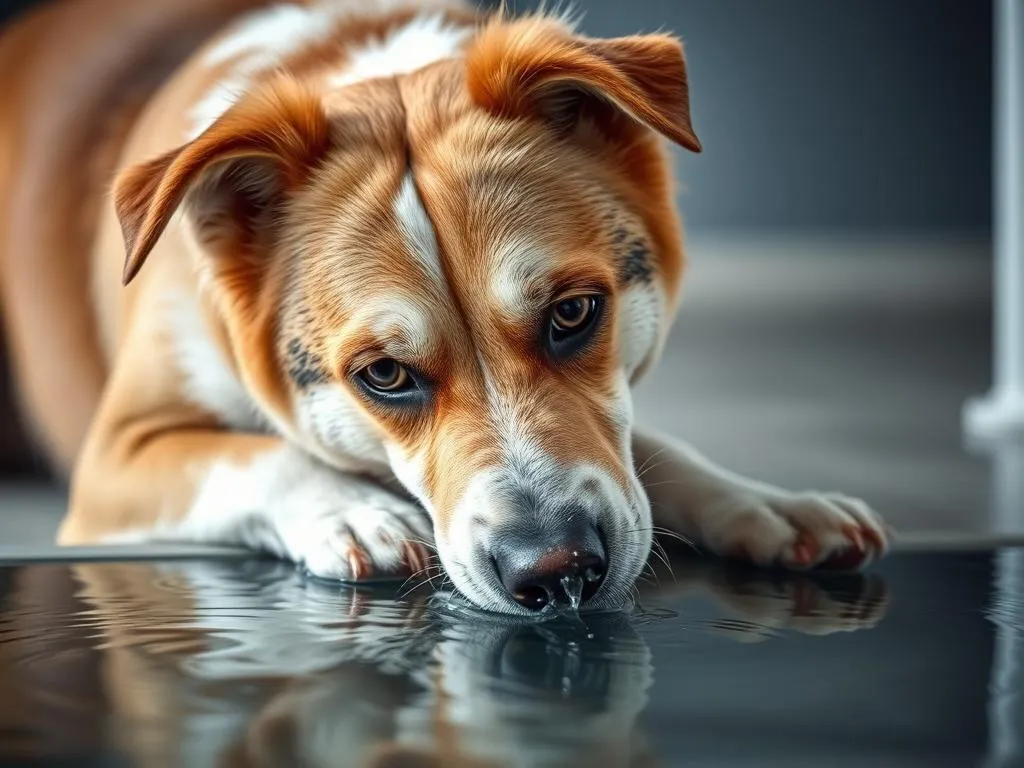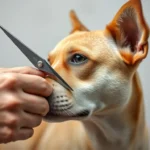
Having a furry friend in the house is a joy, but it can also come with its own set of challenges. One common issue many dog owners face is when their dog makes a mess drinking water. This behavior isn’t just a minor inconvenience; it can affect your home, your dog’s health, and your overall comfort. In this post, we’ll explore the reasons behind this messy drinking habit, the consequences it can have, and practical solutions to tackle the problem effectively.
Understanding Why Dogs Make a Mess While Drinking Water
Natural Instincts
Dogs are naturally inclined to drink in a way that suits their anatomy. The shape of their mouths and tongues plays a significant role in how they consume water. When a dog drinks, it often creates a vacuum effect, leading to splashing and spilling. This is simply part of their instinctive behavior.
In the wild, dogs would typically lap up water from natural sources, which can be messy due to the way they use their tongues. Understanding this natural instinct can help owners be more patient when dealing with the mess that comes with providing hydration.
Excitement and Energy Levels
Another reason your dog makes a mess drinking water is due to excitement. Many dogs are enthusiastic drinkers, especially after playtime or exercise. Breeds known for high energy levels—like Border Collies, Labrador Retrievers, and German Shepherds—are particularly prone to this behavior. Their eagerness can lead to splashing water everywhere, turning a simple drink into a mini-water park.
Water Bowl Design and Placement
The design and placement of your dog’s water bowl can significantly impact how messy drinking becomes. A shallow bowl may lead to more splashing, while deeper bowls might allow for more controlled drinking. The material of the bowl also matters; stainless steel bowls are more durable but might not be as stable as heavier ceramic options.
Moreover, where you place the bowl can influence messiness. A bowl positioned in a high-traffic area might attract spills, while a quiet corner might keep things cleaner.
The Consequences of a Messy Drinking Habit
Hygiene Issues
One of the most pressing problems with a dog making a mess drinking water is hygiene. Spilled water can lead to the growth of bacteria and mold, which can pose health risks to both pets and humans. Regularly cleaning the water bowl is crucial, not just to keep the area tidy, but to ensure that your dog is drinking from a clean source.
Home Damage
Water spilling on floors can lead to more than just a mess; it can cause damage. Depending on your flooring type, water can warp wood, damage laminate, or create a slippery hazard on tile. If your dog consistently makes a mess while drinking, it might end up costing you in repairs or replacements for affected areas.
Dog’s Hydration Needs
Despite the mess, it’s essential to ensure that your dog stays hydrated. If you find yourself limiting your dog’s access to water due to the mess, it can lead to dehydration. Dogs need access to fresh water at all times, so finding a solution to the mess issue is crucial.
Solutions to Minimize Water Mess
Choosing the Right Water Bowl
One of the simplest solutions to the problem is selecting the right water bowl. Consider using spill-proof or elevated bowls that can help reduce mess. Elevated bowls can also promote better posture when drinking, which can be beneficial for your dog’s health.
Weighted bowls, designed to stay put even during enthusiastic drinking, are another excellent option. Look for non-slip materials to prevent sliding and spilling.
Water Bowl Placement Tips
The placement of the water bowl can significantly influence how much mess is made. Ideally, place the bowl in a low-traffic area where spills won’t cause issues. Consider using mats or trays beneath the bowl to catch any potential spills, making cleanup easier.
Training Techniques
Training your dog to drink more carefully can also help minimize mess. Using commands such as “slow” or “gentle” can be effective. Positive reinforcement techniques—rewarding your dog when they drink without making a mess—can encourage better behavior.
Consistent training can help your dog learn to be more mindful of their drinking habits, reducing the chaos associated with hydration.
Alternatives to Traditional Water Bowls
Water Fountains
Pet water fountains are a fantastic alternative to traditional bowls. They provide a continuous stream of fresh water, which can be more appealing to dogs. The flowing water can encourage your dog to drink more, which is beneficial for their hydration. Additionally, many fountains are designed to minimize spillage.
Slow Feeders and Dish Designs
Slow feeders, typically used for food, can also work well for water. The unique design slows down the drinking process, allowing your dog to take more controlled sips. While these are more common for food, some innovative designs cater specifically to water, helping reduce the mess.
Maintaining a Clean Water Area
Regular Cleaning Routines
To keep the area around your dog’s water bowl clean, establish a regular cleaning routine. Wash the bowl daily to prevent bacteria growth, and consider replacing the water at least once a day. If your dog is particularly messy, you may want to clean the area more frequently.
Be sure to use pet-safe cleaning products to avoid any harmful chemicals that could affect your dog’s health.
Monitoring and Adjusting as Needed
Observing your dog’s drinking habits over time is crucial. If you notice any changes in behavior, such as increased messiness or reluctance to drink, it may be time to adjust your approach. Experiment with different bowl types, placements, and even training techniques to find what works best for your dog.
Seeking Professional Help
When to Consult a Veterinarian
If your dog’s drinking habits change suddenly or become excessively messy, it’s wise to consult a veterinarian. This behavior could indicate underlying health issues, such as dental problems or throat discomfort. A professional can assess your dog’s health and provide valuable insights.
Dog Trainers and Behaviorists
If you’ve tried various strategies to curb your dog’s messiness without success, consider seeking help from a dog trainer or behaviorist. They can offer tailored advice and techniques to modify your dog’s drinking habits. Finding the right professional who understands your specific situation can make a significant difference.
Conclusion
Managing a dog’s drinking habits is crucial not only for maintaining a clean home but also for ensuring your dog’s well-being. By understanding why your dog makes a mess drinking water, exploring the consequences, and implementing practical solutions, you can create a more comfortable environment for both you and your furry friend. Remember, patience and consistency are key. With time and effort, you can foster a better drinking routine for your dog, enhancing your bond and making home life more pleasant.









